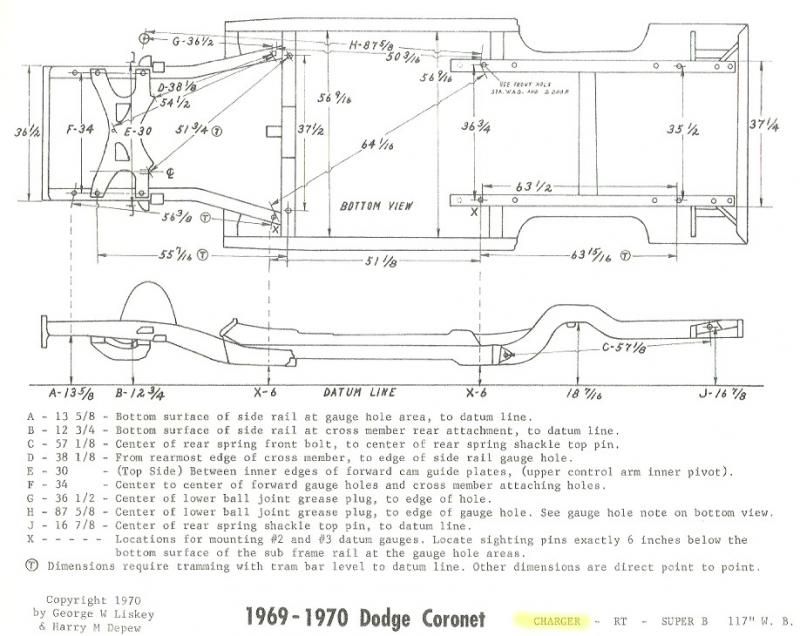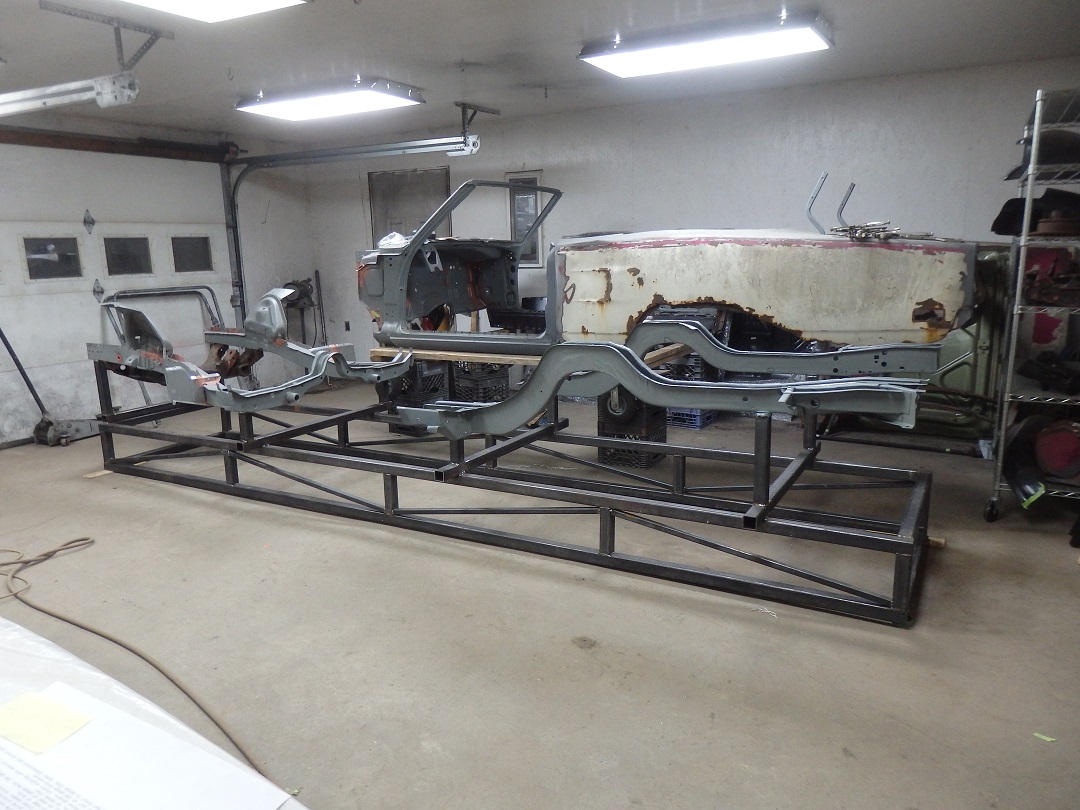 Here is the jig after it was completed. The frame rails were dropped in place and fit correctly. The K-frame was also installed to hold the front frame rails more rigidly.
Here is the jig after it was completed. The frame rails were dropped in place and fit correctly. The K-frame was also installed to hold the front frame rails more rigidly.
Who says you can't do a frame-off restoration on a unibody car ?
|
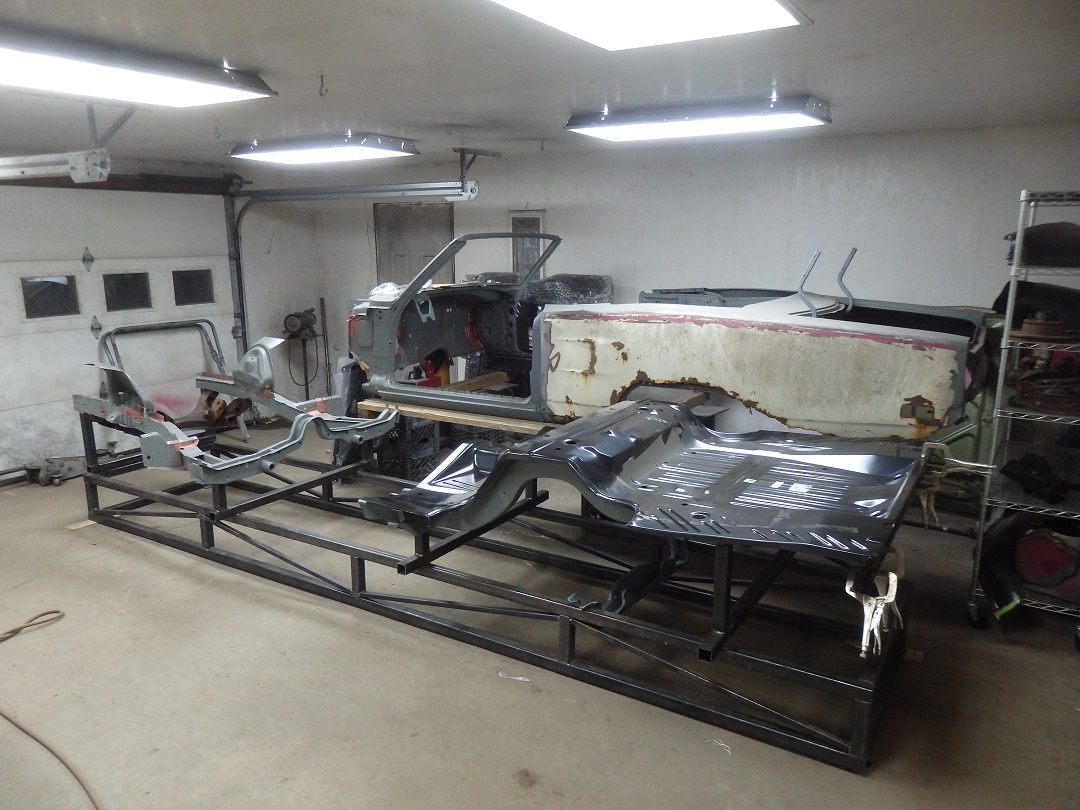 At this point I trial fitted and marked the holes to be drilled in the trunk pan and rear seat pan.
At this point I trial fitted and marked the holes to be drilled in the trunk pan and rear seat pan.
|
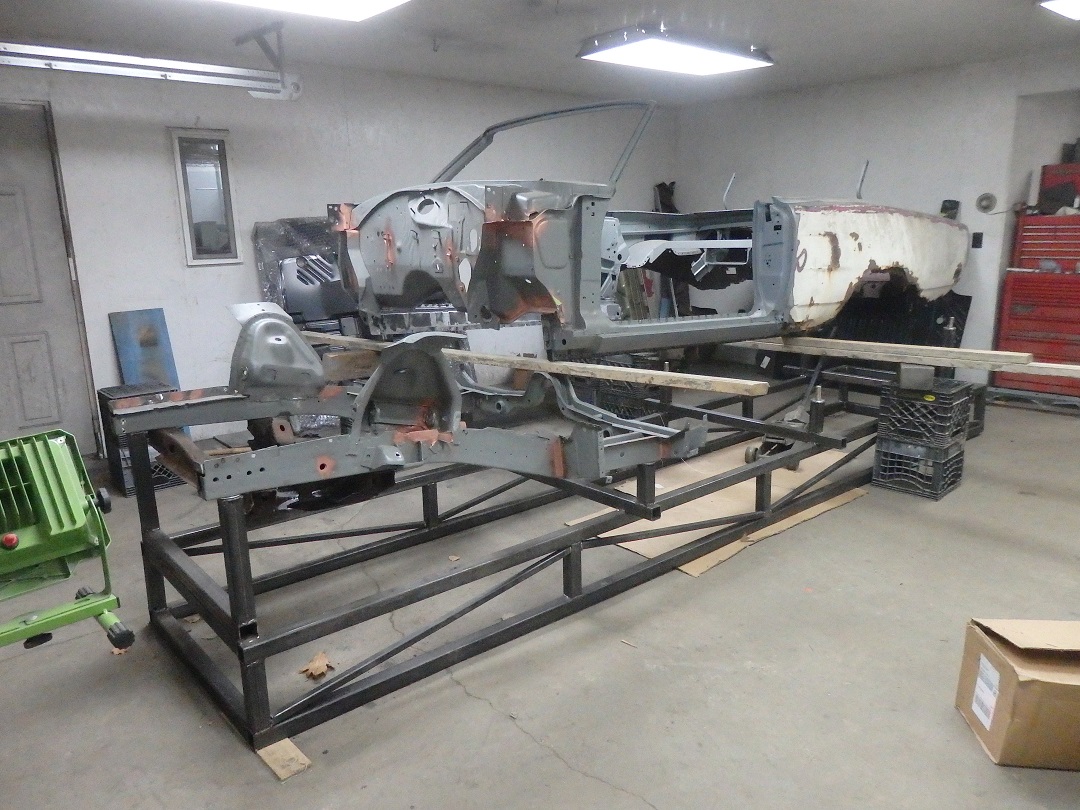 Now comes the fun. Aligning the body to the frame. This can't be done with the rear frame rails on the jig. And since I never separated the front crossmember from the front frame rails, the body had to be cocked
at and angle, left to right, because the inside face of the inner rocker panels are tapered in at the top.
Now comes the fun. Aligning the body to the frame. This can't be done with the rear frame rails on the jig. And since I never separated the front crossmember from the front frame rails, the body had to be cocked
at and angle, left to right, because the inside face of the inner rocker panels are tapered in at the top.
|
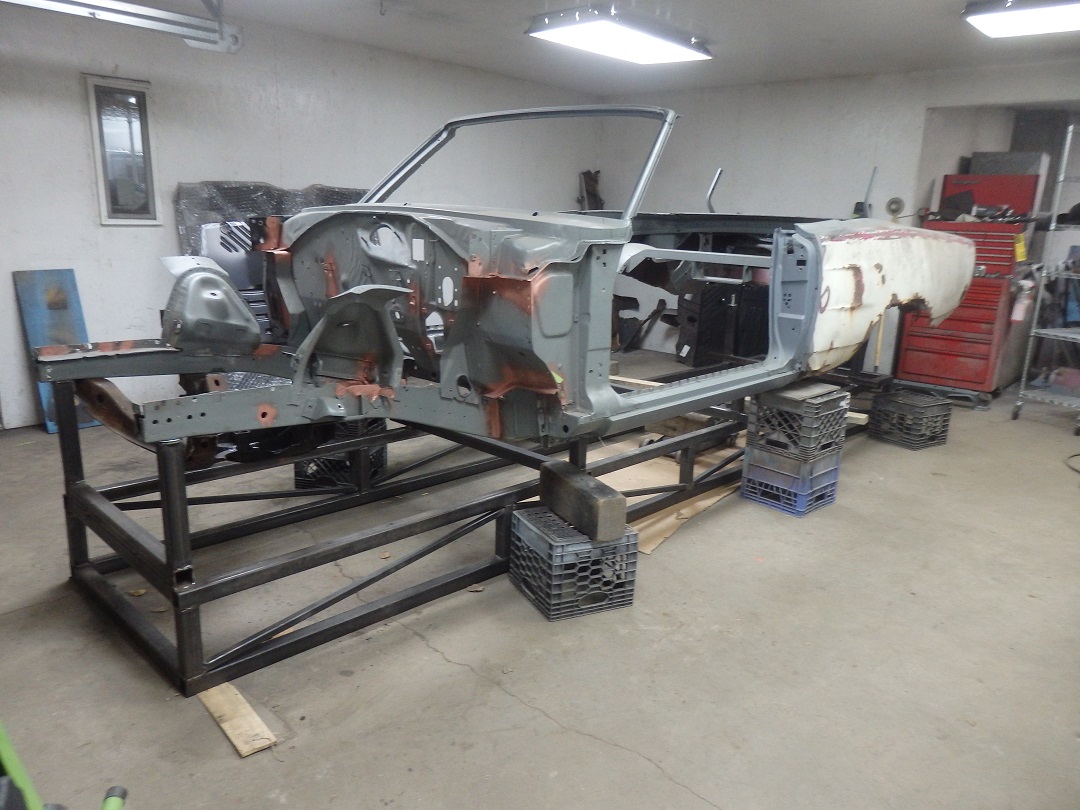 Here is the body positioned roughly correct at the front, but held up in the rear using milkcrates.
Here is the body positioned roughly correct at the front, but held up in the rear using milkcrates.
|
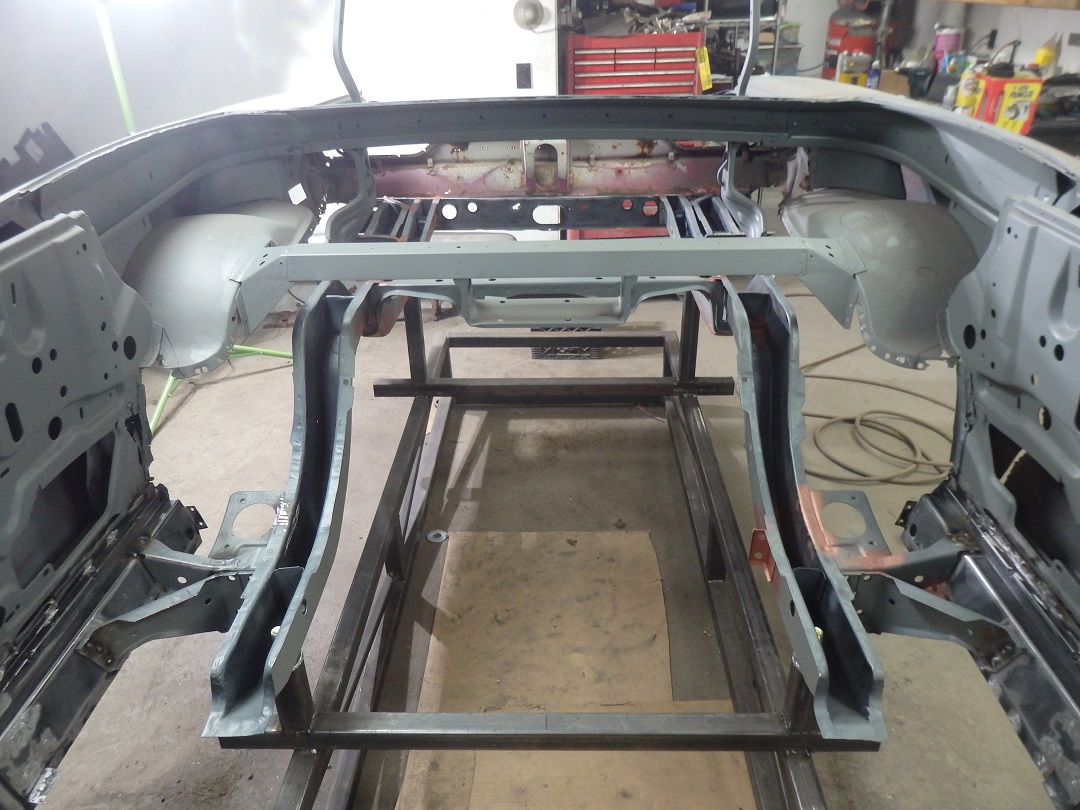 Then the rear frame rails were dropped in place. The rear crossmembers were then screwed to the frame rails.
Then the rear frame rails were dropped in place. The rear crossmembers were then screwed to the frame rails.
|
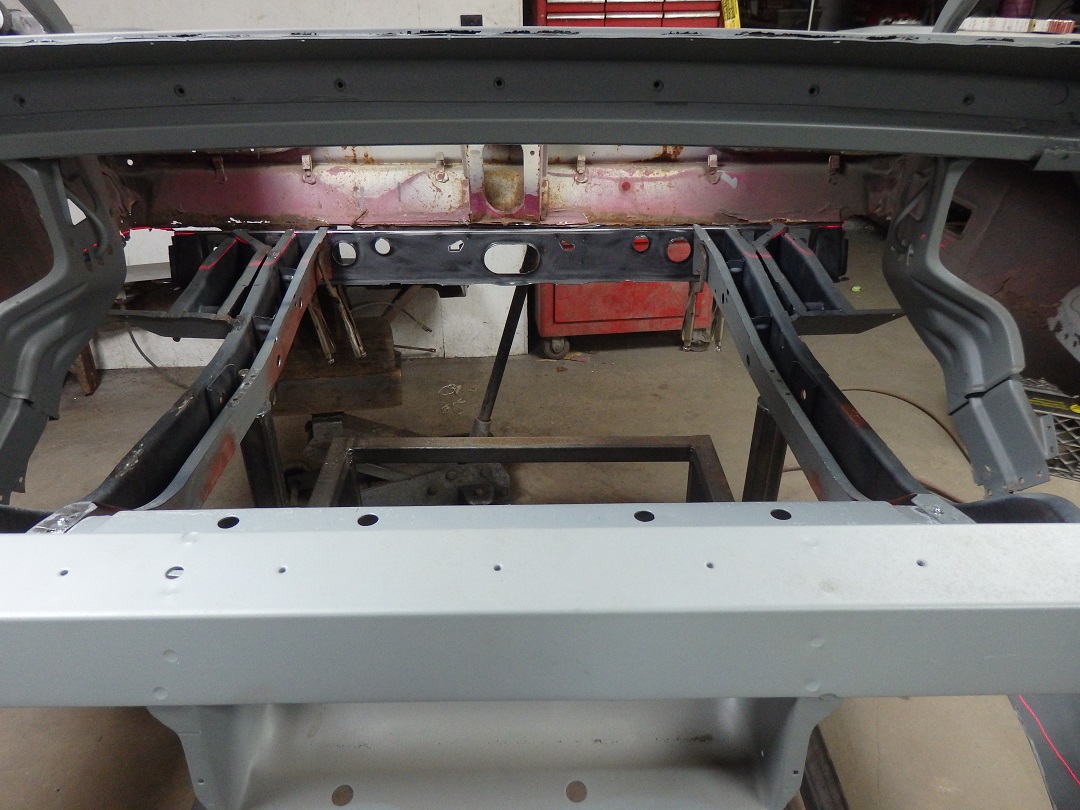 Now things get tricky as there are no drawings to specify how high or low the body sets relative to the frame rails.
Now things get tricky as there are no drawings to specify how high or low the body sets relative to the frame rails.
I used a laser level to align the rear frame rails to the tail panel.
|
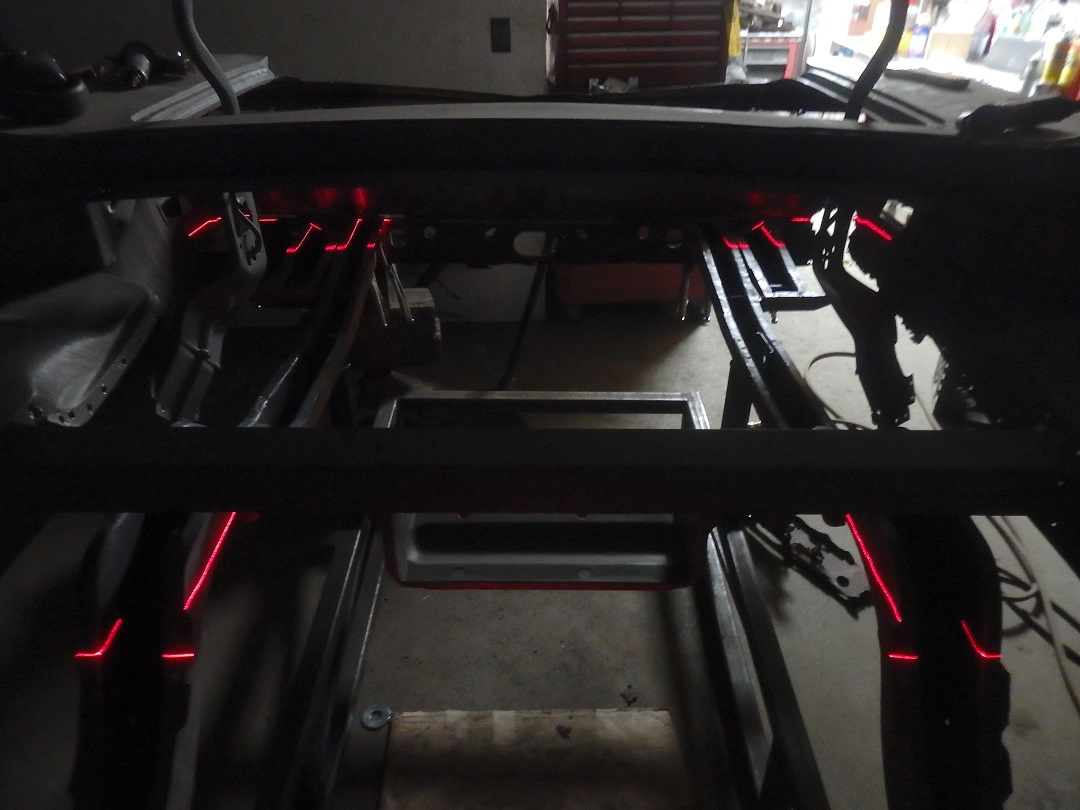 Here you can see the laser alignment better.
Here you can see the laser alignment better.
Of course I never took a picture, but I used the laser level to make sure the top of the inner rockers were level front to back and left to right.
|
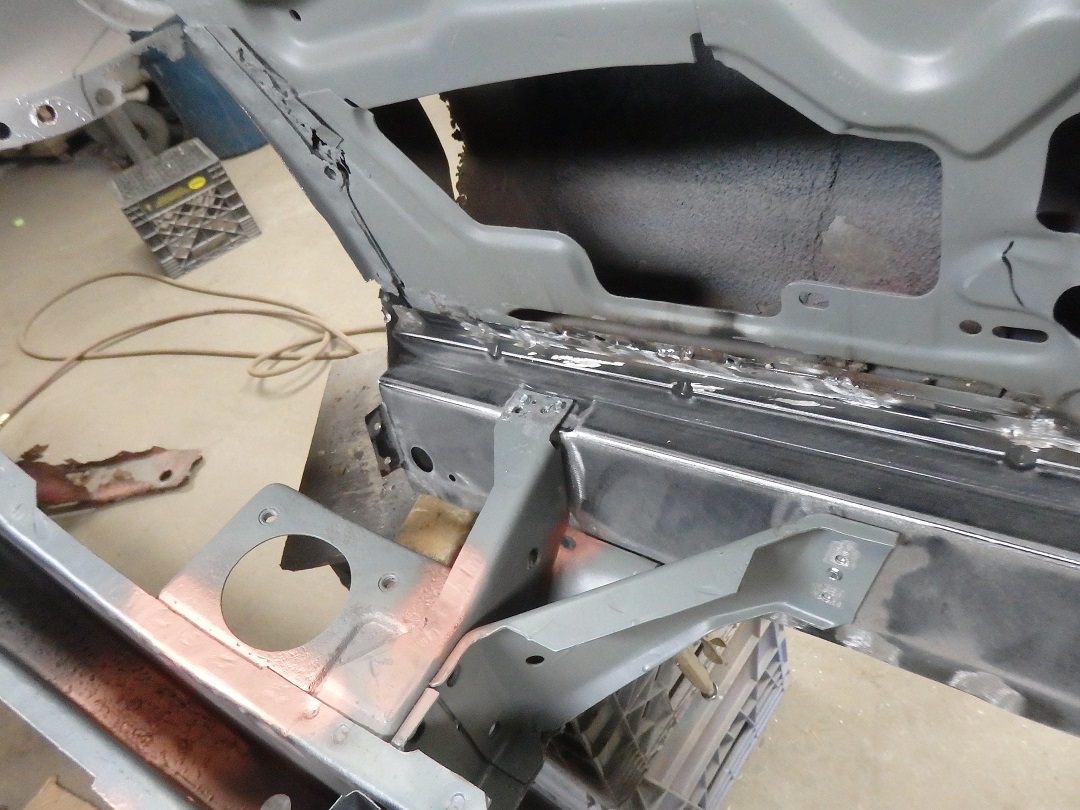 Then everything gets screwed together.
Then everything gets screwed together.
|
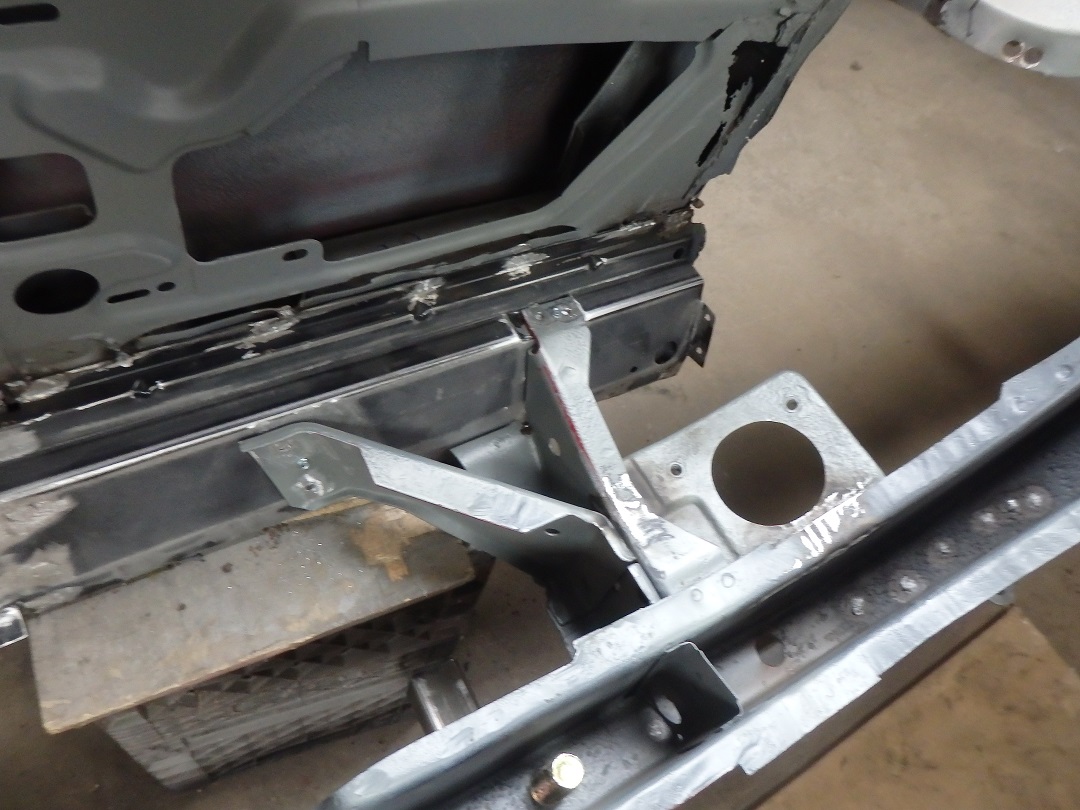 I did fail to take pictures of the new inner rocker panels being installed before the body was brought down over the jig. So all I can offer is a glimpse of them in this picture and
the one above.
I did fail to take pictures of the new inner rocker panels being installed before the body was brought down over the jig. So all I can offer is a glimpse of them in this picture and
the one above.
|
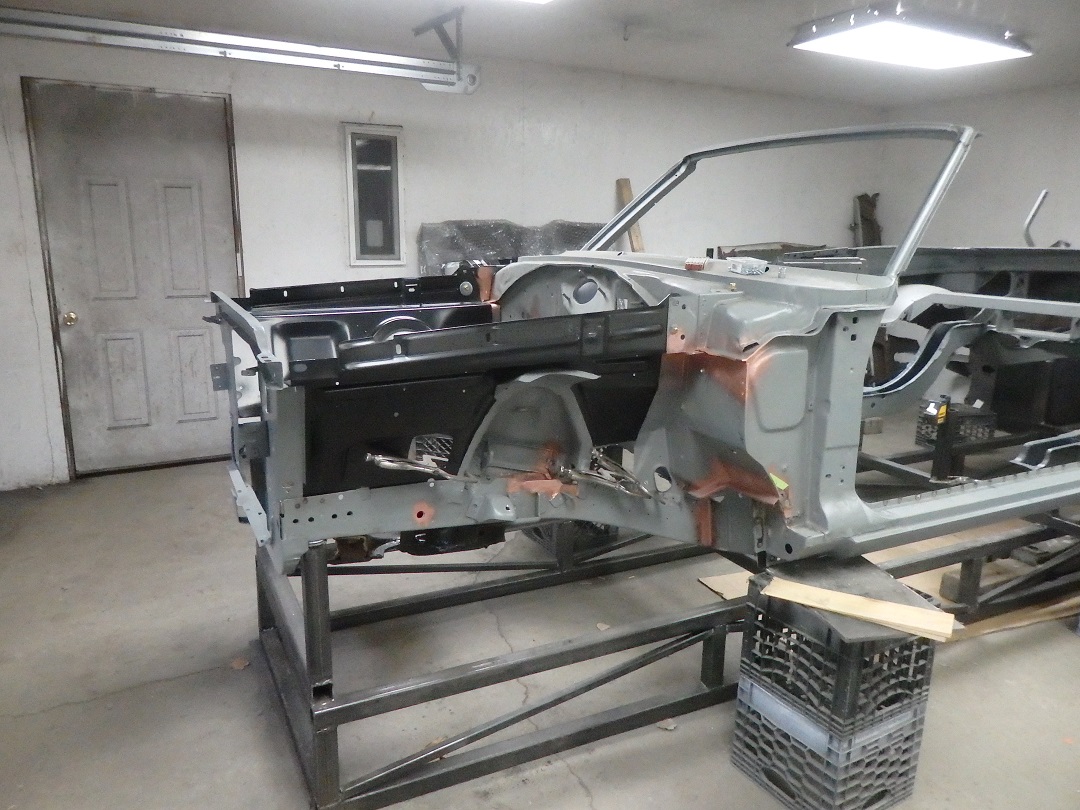 Next up was to trial fit the new inner fenders and the radiator support.
Next up was to trial fit the new inner fenders and the radiator support.
|
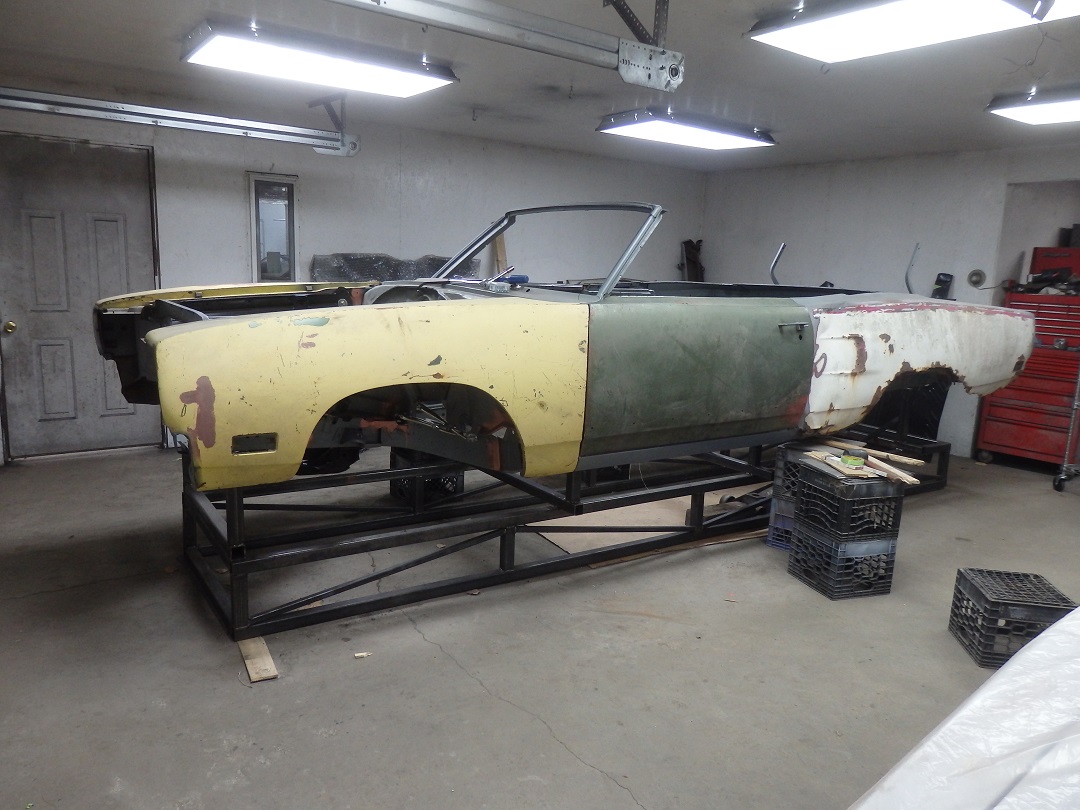 The final alignment was done with the doors and fenders installed.
The final alignment was done with the doors and fenders installed.
|
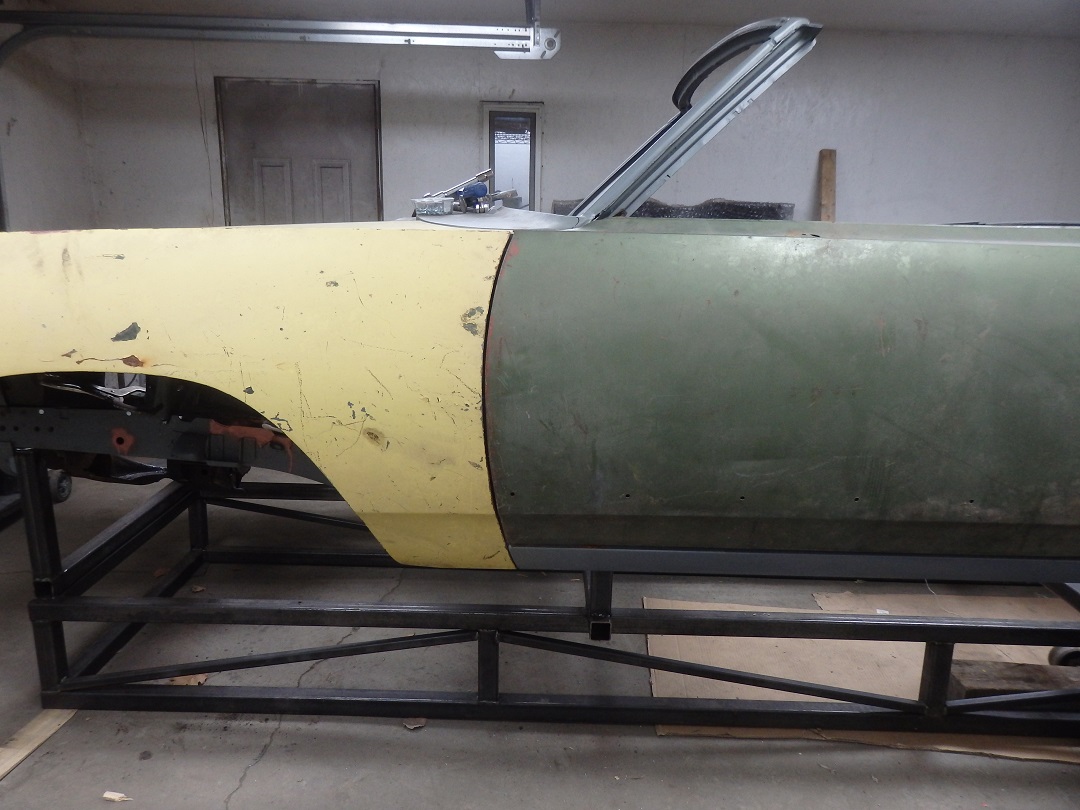 The LH door and fender gaps were great.
The LH door and fender gaps were great.
|
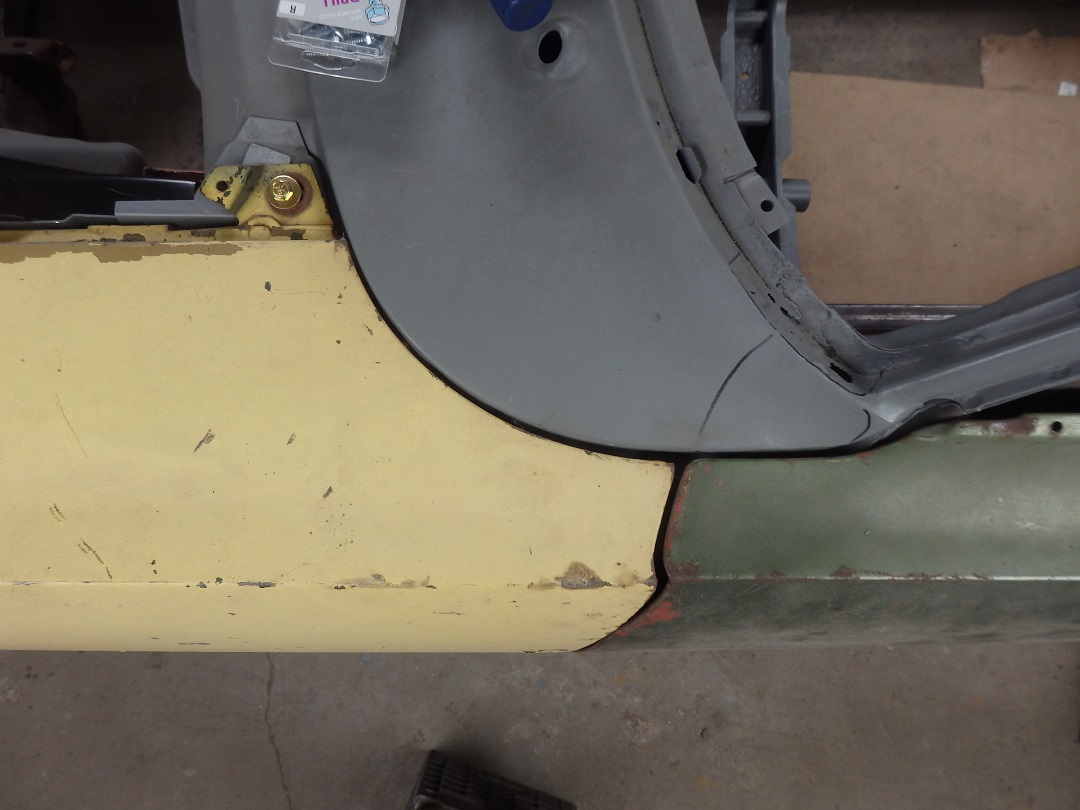 In this picture the front of the LH fender could use to be brought out a little bit to give a better gap at the firewall, but otherwise looked pretty good.
In this picture the front of the LH fender could use to be brought out a little bit to give a better gap at the firewall, but otherwise looked pretty good.
|
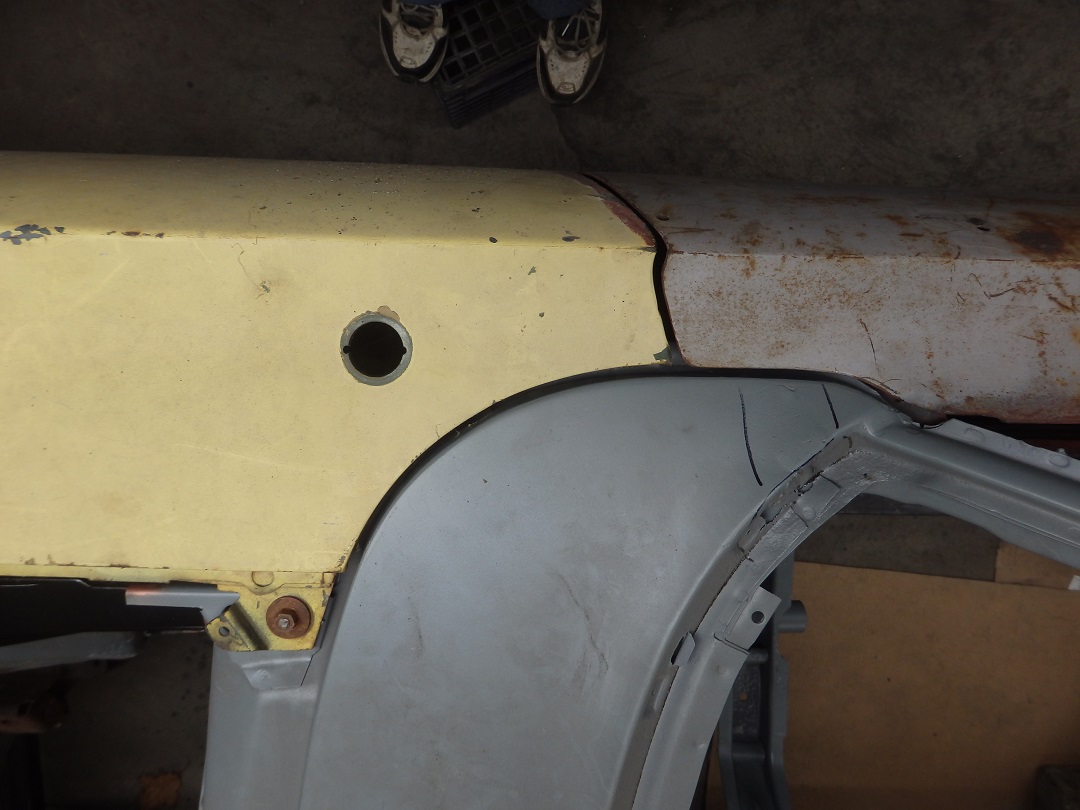 The right side was spot on.
The right side was spot on.
And with that, the frame rails were welded to the rocker panels.
|
